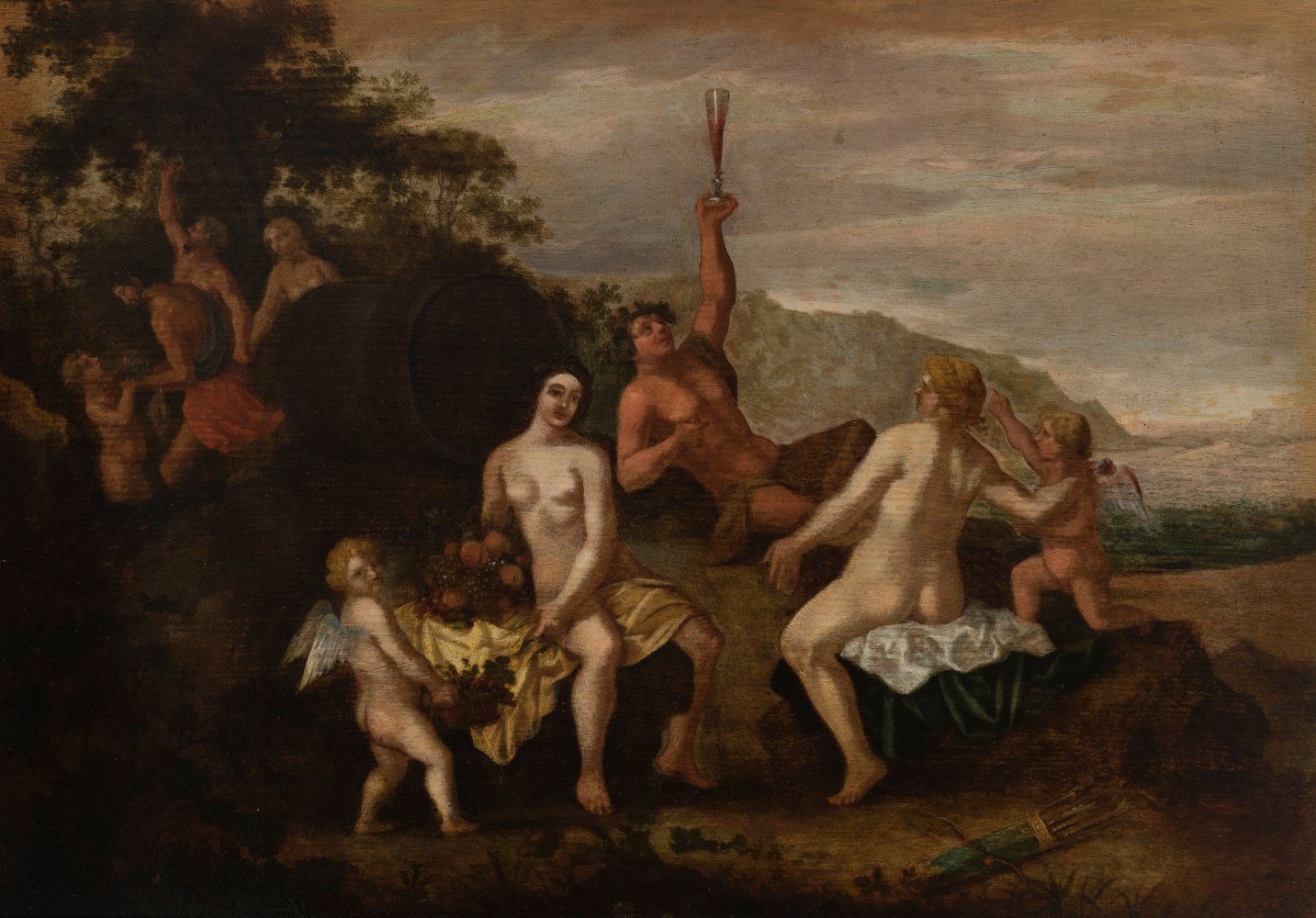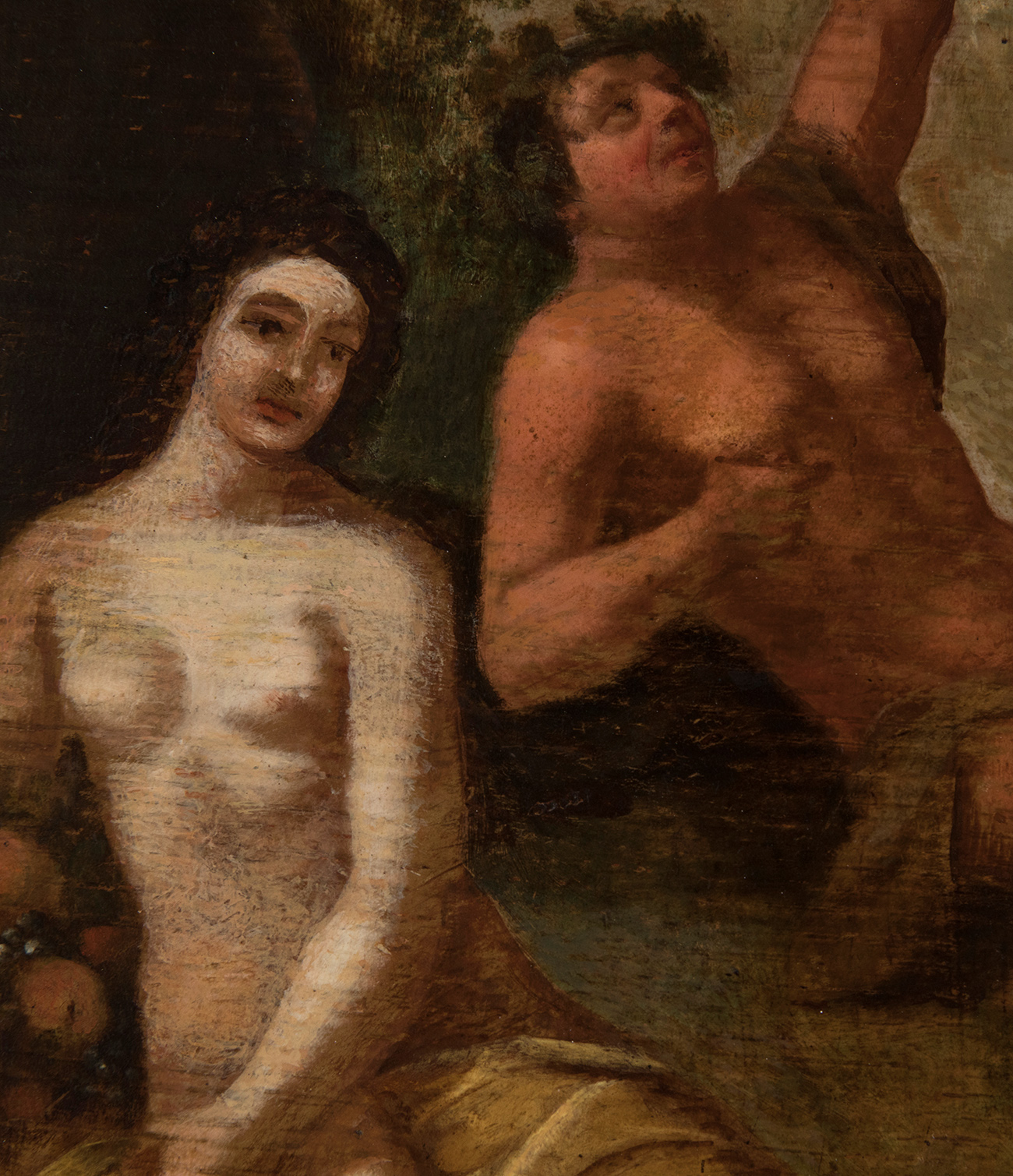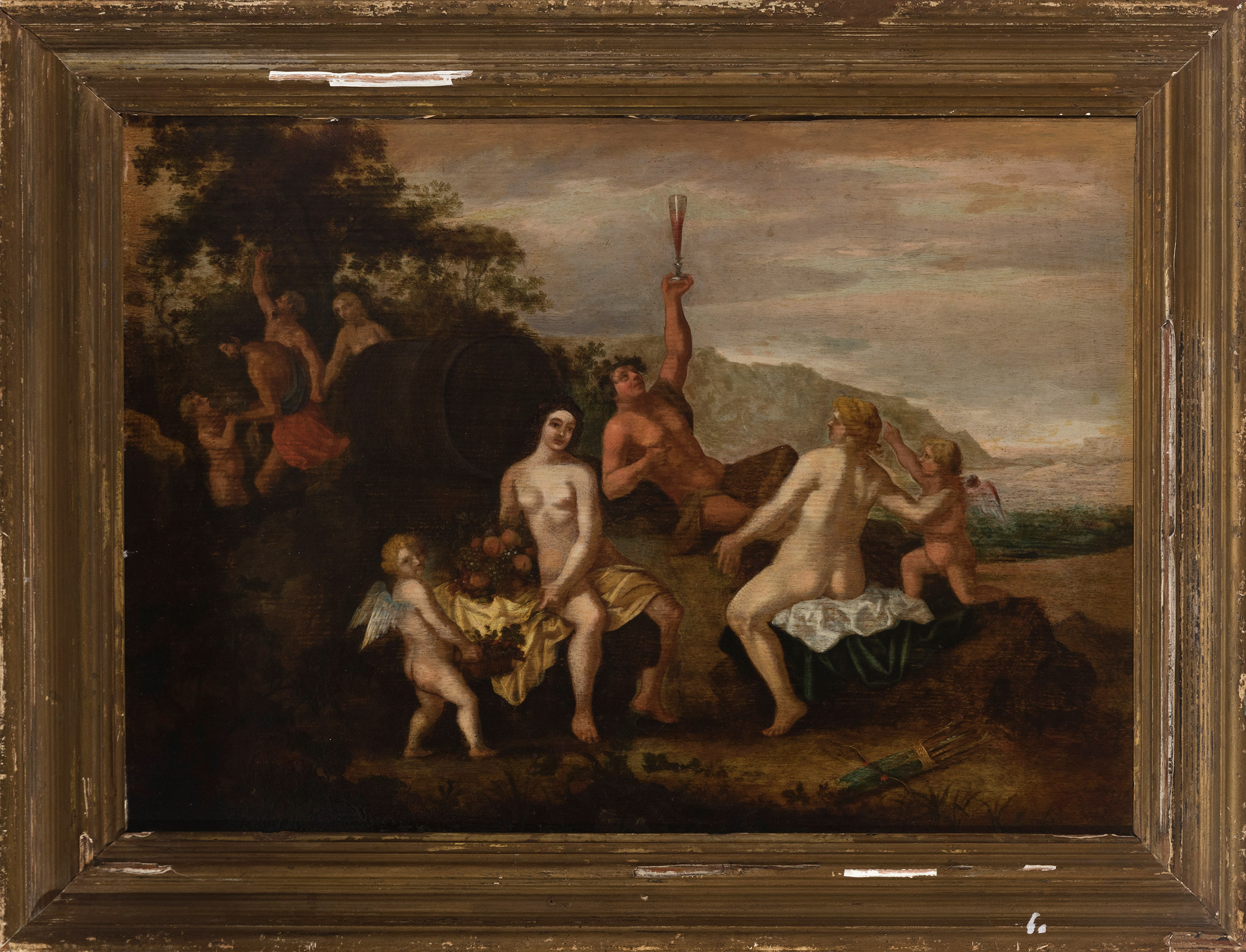34
Dutch School; late 17th century."Bacchanal".Oil on oak panel. With restorations. Frame from the 19th
1/4
Description
Dutch School; late 17th century.
"Bacchanal".
Oil on oak panel.
With restorations. Frame from the 19th century.
It presents faults on the pictorial surface.
Measurements: 34 x 49 cm; 44,5 x 58,5 cm (frame).
The Bacchic theme has been a constant in the history of Western art since Ancient Greece, when this type of scenes used to decorate the vessels used in banquets. The Romans also frequently depicted it in mosaics and other types of artistic manifestations, and although during the Middle Ages it was relegated in favour of Christian themes, it was taken up again strongly in the Renaissance, with important examples such as Titian's Bacchanalia. Titian's works marked a significant change in the depiction of Bacchus. Titian set his bacchanals in an idyllic Arcadia, turning them into celebrations of sensuality inspired by Roman literature. In the Baroque period, Caravaggio took up this sensual interpretation of Bacchus, which Rubens took to its extreme by combining exuberance and decadence. By then, Bacchus was already one of the favourite themes for painters not only of mythological works, but also for genre painters, who often gave a popular air to their Bacchic scenes, with illustrious examples such as Velázquez's "The Drunks".
"Bacchanal".
Oil on oak panel.
With restorations. Frame from the 19th century.
It presents faults on the pictorial surface.
Measurements: 34 x 49 cm; 44,5 x 58,5 cm (frame).
The Bacchic theme has been a constant in the history of Western art since Ancient Greece, when this type of scenes used to decorate the vessels used in banquets. The Romans also frequently depicted it in mosaics and other types of artistic manifestations, and although during the Middle Ages it was relegated in favour of Christian themes, it was taken up again strongly in the Renaissance, with important examples such as Titian's Bacchanalia. Titian's works marked a significant change in the depiction of Bacchus. Titian set his bacchanals in an idyllic Arcadia, turning them into celebrations of sensuality inspired by Roman literature. In the Baroque period, Caravaggio took up this sensual interpretation of Bacchus, which Rubens took to its extreme by combining exuberance and decadence. By then, Bacchus was already one of the favourite themes for painters not only of mythological works, but also for genre painters, who often gave a popular air to their Bacchic scenes, with illustrious examples such as Velázquez's "The Drunks".
Auction Details
Shipping
T&Cs & Important Info
Ask seller a question
Dutch School; late 17th century.
"Bacchanal".
Oil on oak panel.
With restorations. Frame from the 19th century.
It presents faults on the pictorial surface.
Measurements: 34 x 49 cm; 44,5 x 58,5 cm (frame).
The Bacchic theme has been a constant in the history of Western art since Ancient Greece, when this type of scenes used to decorate the vessels used in banquets. The Romans also frequently depicted it in mosaics and other types of artistic manifestations, and although during the Middle Ages it was relegated in favour of Christian themes, it was taken up again strongly in the Renaissance, with important examples such as Titian's Bacchanalia. Titian's works marked a significant change in the depiction of Bacchus. Titian set his bacchanals in an idyllic Arcadia, turning them into celebrations of sensuality inspired by Roman literature. In the Baroque period, Caravaggio took up this sensual interpretation of Bacchus, which Rubens took to its extreme by combining exuberance and decadence. By then, Bacchus was already one of the favourite themes for painters not only of mythological works, but also for genre painters, who often gave a popular air to their Bacchic scenes, with illustrious examples such as Velázquez's "The Drunks".
"Bacchanal".
Oil on oak panel.
With restorations. Frame from the 19th century.
It presents faults on the pictorial surface.
Measurements: 34 x 49 cm; 44,5 x 58,5 cm (frame).
The Bacchic theme has been a constant in the history of Western art since Ancient Greece, when this type of scenes used to decorate the vessels used in banquets. The Romans also frequently depicted it in mosaics and other types of artistic manifestations, and although during the Middle Ages it was relegated in favour of Christian themes, it was taken up again strongly in the Renaissance, with important examples such as Titian's Bacchanalia. Titian's works marked a significant change in the depiction of Bacchus. Titian set his bacchanals in an idyllic Arcadia, turning them into celebrations of sensuality inspired by Roman literature. In the Baroque period, Caravaggio took up this sensual interpretation of Bacchus, which Rubens took to its extreme by combining exuberance and decadence. By then, Bacchus was already one of the favourite themes for painters not only of mythological works, but also for genre painters, who often gave a popular air to their Bacchic scenes, with illustrious examples such as Velázquez's "The Drunks".
29th December - Old Masters
Sale Date(s)
Venue Address
Aragón 346, Barcelona
Calle Velázquez 7, Madrid
Carrer de Cirilo Amorós 55, Valencia
Barcelona
08009
Spain
General delivery information available from the auctioneer
Setdart offers Worldwide shipping
PICK UP IN ROOM: You can come and pick up your lots in our offices (Barcelona, Madrid or Valencia). At the moment of the withdrawal, you will be able to accept the current conditions of the lot by means of a document that you will sign.
YOU CAN SEND ANOTHER PERSON TO PICK UP: This person must present a signed authorization that you can find in our web page by accessing from BUY AT SETDART- LOGISTICS-DOWNLOAD AUTHORIZATION DOCUMENT. You can also send an e-mail with the requested data in AUTHORIZATION DOCUMENT to admin@setdart.com
Important Information
25% buyer´s premium
21% buyer´s premium at www.setdart.com












